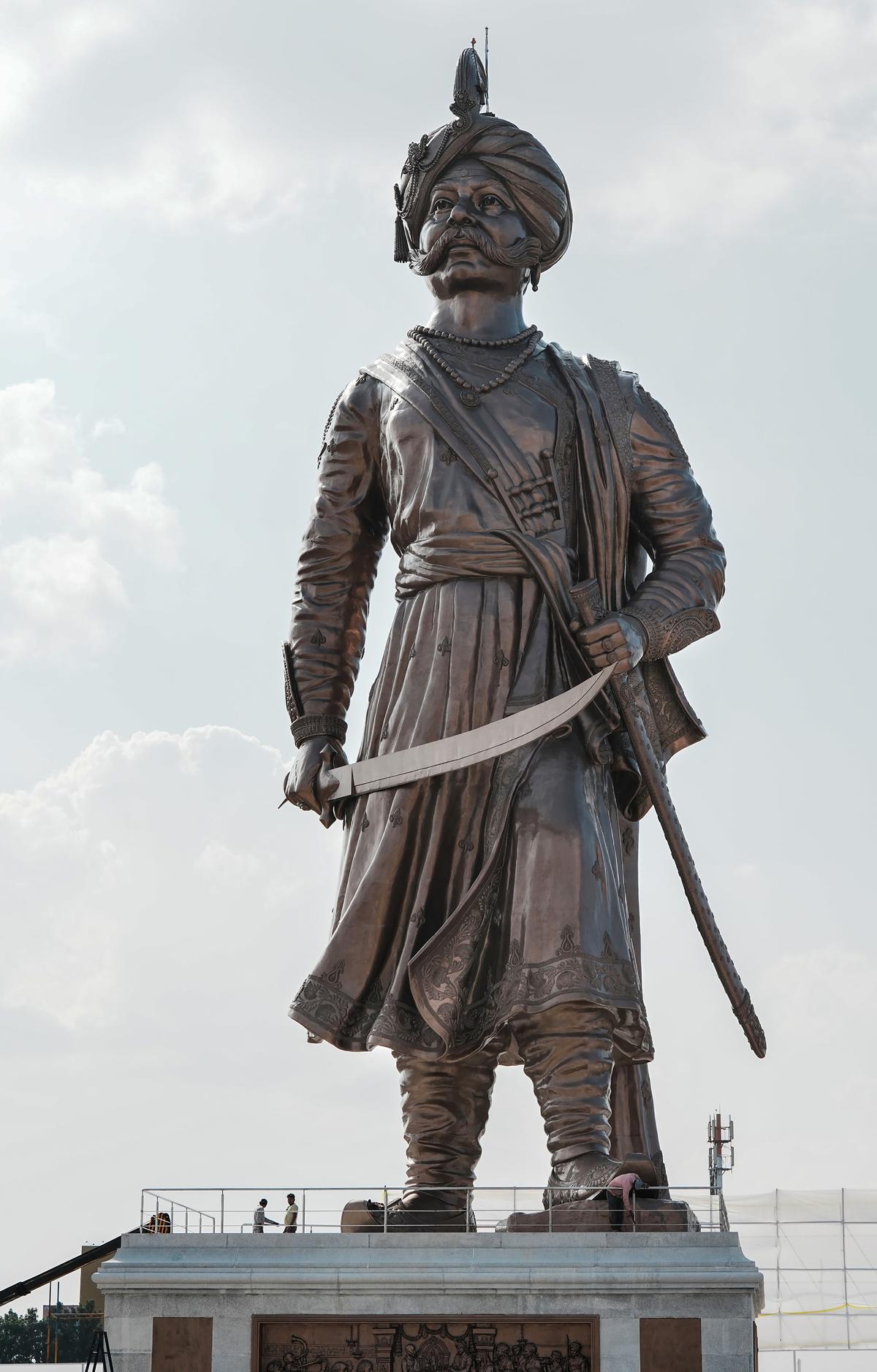
Imaginative pasts, the uncertain futures of historians Premium
The Hindu
The professional historian today hesitates to cross the dangerous minefield that the past has become
In a landscape already crowded with flexi-banners of Bengaluru’s Members of the Legislative Assembly or a smiling Puneeth Rajkumar (the actor), flag poles, statuary and immense amounts of commercial clutter, comes the latest towering addition of Kempegowda I. A chieftain of the 16th century, widely credited with the founding of Bengaluru in 1537, has been immortalised in a 108-foot bronze ‘Statue of Prosperity’. This comes years after the city’s new airport at Devanahalli was named after Kempegowda, though few outside Karnataka knew about him; now his towering presence at the airport should leave no visitor in doubt.
Can the professional historian of Karnataka any longer be heard over the din and the roar of those who claim to speak about the State, its heroes and their pasts? The historian is confined to researching, writing, and perhaps in some lucky cases, teaching about complex, contentious and conflicted pasts. These are paltry resources against those who, with State, party or community backing, aggressively deluge social media, install statues, build new structures to commemorate their heroes (alas, usually men) — or plan agitations for the take-over of established religious sites, to denigrate the ‘villains’ of the past (alas, usually Muslims). Colourful assertions in videos and plays have infinitely greater appeal than a defiantly dull dissertation. And they are blissfully free of any obligation to historical objectivity or reasoning.
Historians thus had no role at all in determining either the size, clothing or demeanour of the Nadaprabhu (Nadaprabhu Kempegowda). According to the former Bangalore Mayor, (the late) G. Narayana, the first statue of Kempegowda was installed in front of the Bangalore Corporation in 1964 after a five-year period when corporators argued about what he might have looked like. Had historians played their role, they might have offered the two extant versions of a pious Kempegowda at the Someswara Temple at Halasuru and the Gangadhareshwara temple at Shivagange. Whether in the bas relief at Halasuru or the statue at Shivagange, he is shown in a prayerful attitude, both hands folded, and with his sword safely sheathed. But the person who has now been posthumously consecrated as the yuga purush of the entire region — standing on mud procured from different parts of the State — requires a warrior-like stance, sword drawn.
But his elaborate embroidered tunic, ‘churidars’, turban, sarpesh, and upturned footwear in the gigantic statue is cause for pause. In the two known representations, he is bare-chested, barefoot, and with the creases of his panche clearly shown. Even more interesting is his headgear, which historians have identified as the Kullayi (also kapayi in Kannada) ‘tall conical cap of brocaded fabric’ — usually worn with the Kabayi (long white tunic). These were garments borrowed by the Vijayanagar kings from their Islamic neighbours. Such cultural borrowings — forms of dress, address, judicature, or architecture — as many medieval historians have shown, were common in the period that has stubbornly been identified as a time of unalloyed Hindu-Muslim antagonism.
By the 17th century, Maratha styles of dress also became popular, themselves fusing Islamicate court traditions, as in the successor States of Vijayanagar at Ikkeri, Madurai and Thanjavur. Kempegowda’s clothing in fact conforms more to those of the 18th century ruler Tipu Sultan, whose name has become anathema to large sections of the Kannada public. Devanahalli, where the airport is located, is Tipu’s birthplace — Kempegowda’s birthplace was Yelahanka, some distance away.
‘Islamicate’ or ‘Persianate’ — rather than ‘Islamic’ — is the historian’s preferred term, to distinguish the extensive politico-cultural influences from close links to religion. Such nuances are of course lost on the political stalwarts who ‘joyfully march to (Hindutva) music in rank and file.’ A full-fledged battle has recently broken out in Mysuru over the design of a new bus shelter, which first sported three domes. Mysuru MP Prathap Simha red-flagged the ‘gumbaz-like’ structure as more appropriate to Pakistan than Bharat, and demanded it be demolished and reconstructed. The MLA S.A. Ramdas explained that his effort was to pay a tribute to the domes of the Mysore Palace, and the style favoured in early 20th century palace construction. In this intra-Bharatiya Janata Party war, Prathap Simha’s roar about the bus stop resembling a masjid made the contractor scramble to install kalashas on the structure overnight; when even that did not diminish the rage of the MP, it was painted orange. It is as hopeless to point out that the Kodekal and Tintinni temples (Yadgir district) sport minarets and domes as it is to point out the difference between monarchies and democracies to University Grants Commission chairmen. Rightly had Albert Einstein said of the ‘joyful marchers’ that they were mistakenly given a large brain when a spinal cord would have sufficed.
The rage against Tipu Sultan meanwhile gathers force on several fronts; the head of the State repertory theatre, Rangayana, has written a play (performed with 250-strong police protection) called Tipu Nija Kanasugalu (Tipu’s Real Dreams) which portrays him as a tyrant. (Historian Michael Sorocoe has shown that this cultivated image was crucial to the establishment of a British imperial order from the late 18th century.) We have come a long way from Hulimane Sitarama Sastry’s portrayal of Tipu Sultan in the play he wrote and performed in the late 1940s and 1950s, ringing out the words ‘Veera! Dhira! Shura!’ and celebrating the Mysuru huli (tiger) as the first anti-colonial warrior.













